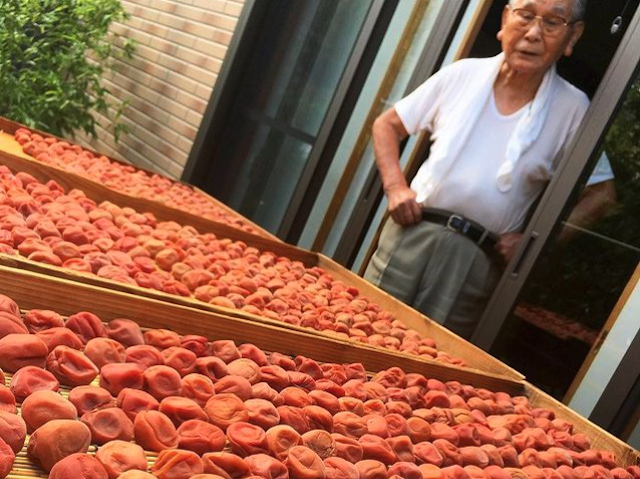
92-year-old shares his recipe for making the best pickled plums.
Along with staples like rice and miso soup, pickles are a main part of Japanese cuisine, and the best ones, in our opinion, are the ones that are lovingly homemade.
So when this year’s season for pickling plums arrived in early summer, our Japanese-language reporter Go Hatori decided to take a trip out to his grandparents’ place to learn their secrets for making umeboshi (pickled plums), seeing as his grandfather has been making loads of them every year for as long as he can remember.
▼ At the age of 42, Go was finally at a stage in his life where he felt ready to inherit the recipe from his 92-year-old grandfather.
Before they got started with the long, multi-step process, Go prepared the following items:
・Nanko ume → This was Go’s first attempt, so he started with a relatively modest two kilograms (4.4 pounds) of Nanko plums, which are renowned for being the best quality plums in Japan.
・Red perilla → Buy the perilla as soon as it hits the market. More details on this later.
・Coarse salt → Go mistakenly picked up a salt that wasn’t as coarse as the one his grandfather usually uses, but it was still fine to use. Two kilos of plums with a salt content of 15 percent requires 300 grams (10.6 ounces) of salt.
・Container → Go purchased a standard pickling container with lid for 503 yen (US$4.56) online, but any large glass or ceramic container works just as well.
・Weight → Go purchased a weight commonly known as a “tsukemono ishi” (“pickling “stone”) online for 990 yen, but again any weight (even a bag of pie weights) will do, as long as it’s roughly equal in weight to the weight of the plums you’re using.
・Pickling bag that can be tied → Go’s grandmother advised him that the lid of the pickling container might not close at first, once the plums are inside, so it would be better to seal the pickles with a bag to keep the contents safe from dust and insects.
Other handy items to have on hand are some long bamboo skewers, paper kitchen towels for cleaning the plums, and a large container to store the pickles in once they’re made.
As we previously mentioned, the process for pickling plums is a long one, but it’s well worth it, and Go got started with the first step on 20 June. This is the time when most families in the Tokyo area will begin pickling plums, although its possible to get started a week or two before this date.
Day 1
Step 1: Remove the hard tips in the navel-like cavity at the top of the plums with a bamboo skewer.
As Go’s grandfather demonstrates, you’ll want to take the hard tips off all the plums, being careful to avoid damaging the skin around it. In the photo below, you can see how the fruit has been cleaned of its hard tip, which is now resting on his palm and ready to be discarded.
Step 2: Wash the plums with water.
Step 3: Wipe the water off each plum, one by one, with paper towels.
Step 4: Measure out 300 grams of of salt (this will create two kilos of umeboshi with 15-percent salt content).
Step 5: Open the pickling bag and place it inside the container (other food-grade plastic bags can be used, as long as they can be tied at the top).
Step 6: Add a layer of plums and salt at the bottom of the bag.
Step 7: Repeat this process, creating layers of plums-salt-plums-salt-plums-salt until all the plums are in the bag.
Step 8: Cover with the small inner lid, then place the weight on top.
Step 9: Lightly tie the top of the bag to protect it against dust and insects.
Step 10: Put the lid of the container on top, even if it doesn’t seal properly, and leave it in a dark, cool spot to do its magic for around a week.
One week later…
Step 11: As if by magic, the lid can now be fully closed! This seemed so miraculous to Go that he illustrated his surprise with “エッ! スゴい!” (“Huh! Amazing!”) on the photo.
Step 12: Check that the plums look good and the liquid is relatively clear (this liquid is plum vinegar, created by the salt drawing the juice out from the plums). Leave everything as it is until mid-July.
Mid-July
Go proceeded to the next step, preparing the red perilla, on 17 July, although it may be possible to do this a week earlier. With everyone making their pickled plums at the same time, there’s a danger that the red perilla ingredient may be sold out by this time, which is why Go’s grandfather advises buying it as soon as it hits the market, even if it’s in the first week of July, to make sure you’re able to secure it before it sells out.
Step 13: Rinse the red perilla with water several times. Go was lucky here because he was able to use freshly picked perilla leaves that his grandfather had grown in his garden.
Step 14: Remove as much of the water as possible. Go used a salad spinner for this step.
Step 15: Place the dried red perilla and coarse salt (10 percent of the weight of the red perilla) in a zip lock bag and shake it. Once the salt has been evenly distributed through the leaves, remove the air from the bag, seal it, and squeeze the contents, while still in the bag, with your hands.
▼ Step 16: Take the leaves out of the bag, place them in a bowl and press them hard with your fingers. This will release a purple-coloured liquid, which needs to be discarded.
Step 17: Spread the perilla out without breaking it, add some salt to cover and squeeze again. The purple liquid will appear again, so discard the liquid and repeat 2-3 times until the liquid no longer appears.
Step 18: Scoop a spoonful of the plum vinegar out of the plum bag and place it over the squeezed red perilla. This will make it turn into a nice red colour!
Step 19: Arrange the perilla evenly on the top of the plums and pour the red liquid from the bowl over everything.
Step 20: Cover with the inner lid, place the weight on top, and lightly tie the bag.
Step 21: Seal with the outer lid and leave it for about two weeks.
Early August
Go proceeded to the next step of drying the plums on 1 August, but his grandfather advises that it’s best to start this step on the Day of the Ox, which falls on different midsummer days depending on the year. This year, the Day of the Ox was on 28 July, but it’s still okay to start drying the plums a little after this date.
Step 22: Take the bag out of the container and admire the beautiful red hue of the mixture you’ve created!
Step 23: Arrange the plums on a drying net like this one Go bought from Daiso.
Step 24: Dry them! One kilo of plums was the perfect amount for one net, so Go spread his two kilos of plums across two nets.
Step 25: Take the red perilla leaves out of the container, place in a separate plastic container and dry them in the sun. Place the plum vinegar in the pickling container and expose it to sunlight to sterilise it as well, with netting over the top of both containers to protect them from dust and insects. Turn the plums over once during the day and put them back in the plum vinegar in the evening and leave them overnight.
Step 26: This is the second day of drying the plums. Go dried them in the nets from the morning, when it was raining, so he brought them indoors and placed them by the window, taking them outside when the sun came out again. During the day, he turned the plums over once while they were in the nets and brought them indoors overnight.
Step 27: The third day of drying begins again from the morning, and the plums are turned over once during the day. This time, don’t take the plums inside at night — leave them outdoors in the nets overnight to expose them to the nighttime dew.
Step 28: The next morning, enjoy gazing at the fruits of your labour as they glisten in the morning sunrise.
Step 29: Collect the plums!
Step 30: Place the plums in a large container. Go bought this glass container for 200 yen at Daiso.
Step 31: Your umeboshi are now complete!
Step 32: Now you can place the red perilla leaves (which were stored in the fridge after being out in the sun on the first day of drying) in the jar with the umeboshi.
Step 33: Then you can write the year on a bit of tape and stick it to the jar — Go wrote “2021 Go うめ” (“2021 Go Plums”).
Step 34: Congratulations — the entire process is finally complete!
Of course, no recipe can be made without a proper tasting, so Go cooked up a batch of rice in his rice cooker and picked out one of the plums for tasting.
Go figured the best way to truly enjoy the flavour of his plum would be with an onigiri rice ball, so he expertly moulded one together in the palms of his hands, placing the pickled plum in the middle of it all, and finished it off with a thin layer of crispy seaweed.
▼ Go’s “umai!” (“delicious!”) reaction says it all.
The only criticism Go expressed in the clip above was the fact that the umeboshi was still “wakai” (“young”) compared to the ones he tried at his grandfather’s place, which were made last year.
Pickles develop greater depth of flavour over time, so while Go’s pickles tasted immature immediately after making them this year, he can look forward to them becoming even more delicious in the coming months. And maybe one day he’ll be able to take on the mammoth scale of umeboshi making displayed by his grandfather every year.
▼ This photo shows the umeboshi made by Go’s grandfather in 2017.
While the process for making umeboshi takes several months, the good news is there’s not a lot of really hard work that goes into making the pickled plums. When Go asked his grandfather for the recipe, he handed him a simple handwritten note, which shows the main steps of: 1. removing the hard bit from the plums 2. Washing the plums 3. Wiping the plums 4. Placing the plums and salt in layers in the container.
▼ This is the family recipe for umeboshi with 15-percent salt content (using two kilos of plums and 300 grams of salt).
You can even skip the perilla leaves if you’re unable to find them, although this will make for a lighter-coloured plum in the end, as the deep red hue comes largely from the perilla leaves. Regardless of whether you make them with or without perilla, though, the umeboshi will start developing some fantastic flavours about half a year after making them — if you can hold off for eating them that long!
So next time summer rolls around, why not try your hand at umeboshi making? They’ll likely be the best umeboshi you’ve ever tasted, and they go perfectly with rice balls, especially ones that look like cute cats!
Photos ©SoraNews24
● Want to hear about SoraNews24’s latest articles as soon as they’re published? Follow us on Facebook and Twitter!
[ Read in Japanese ]

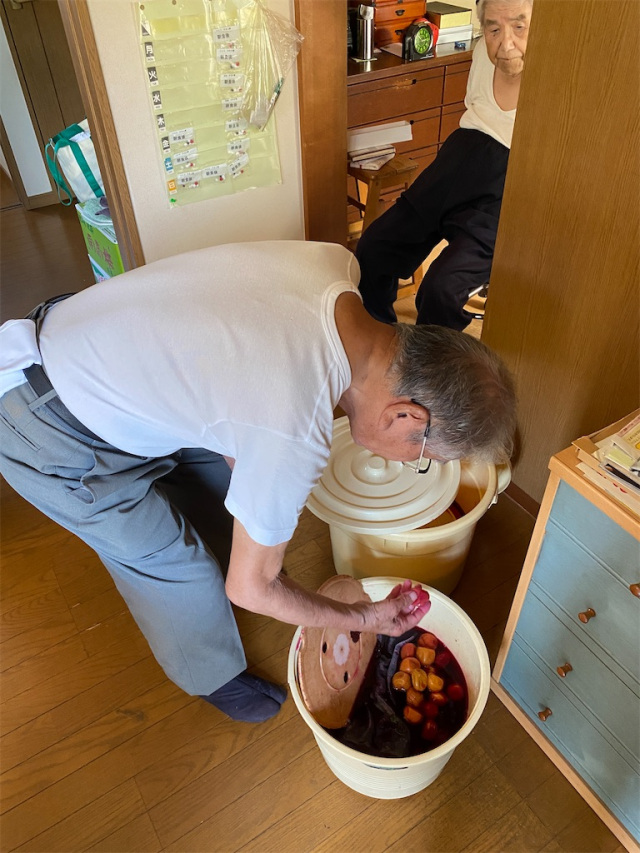
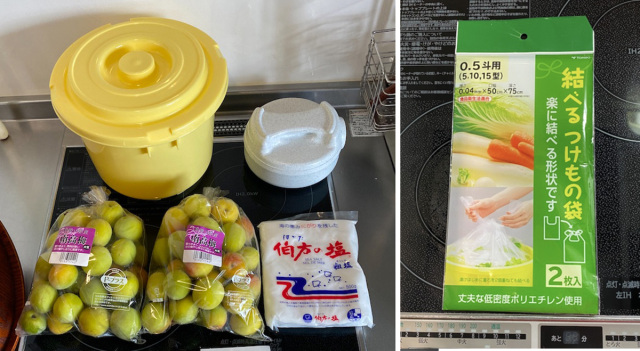
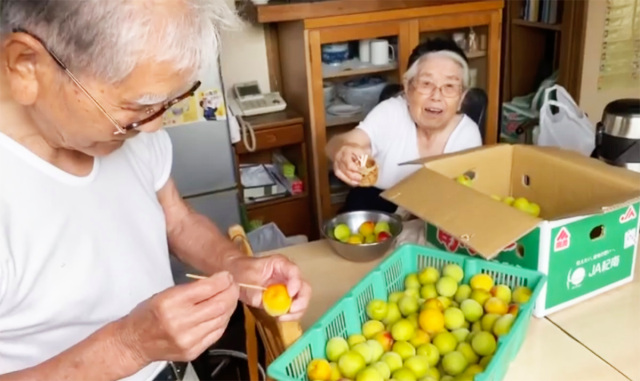
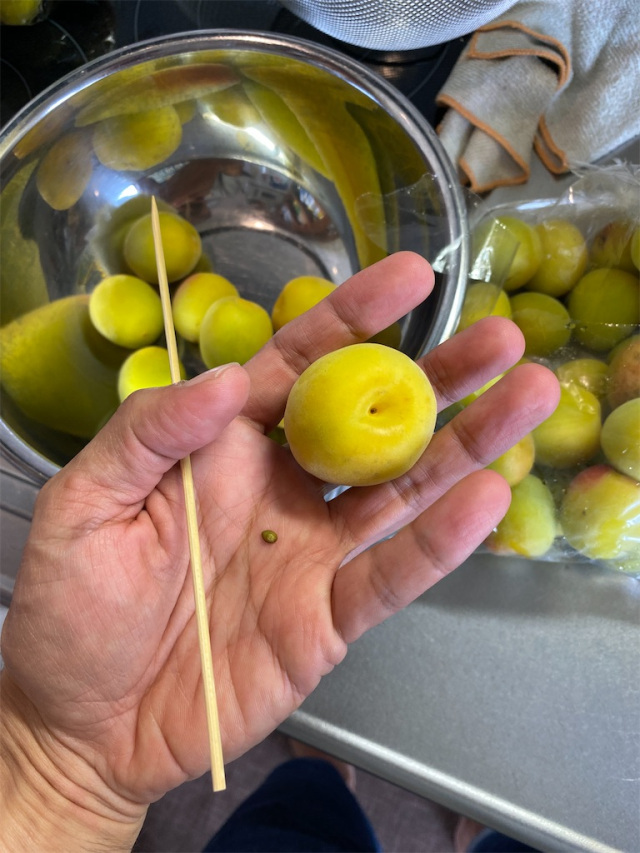
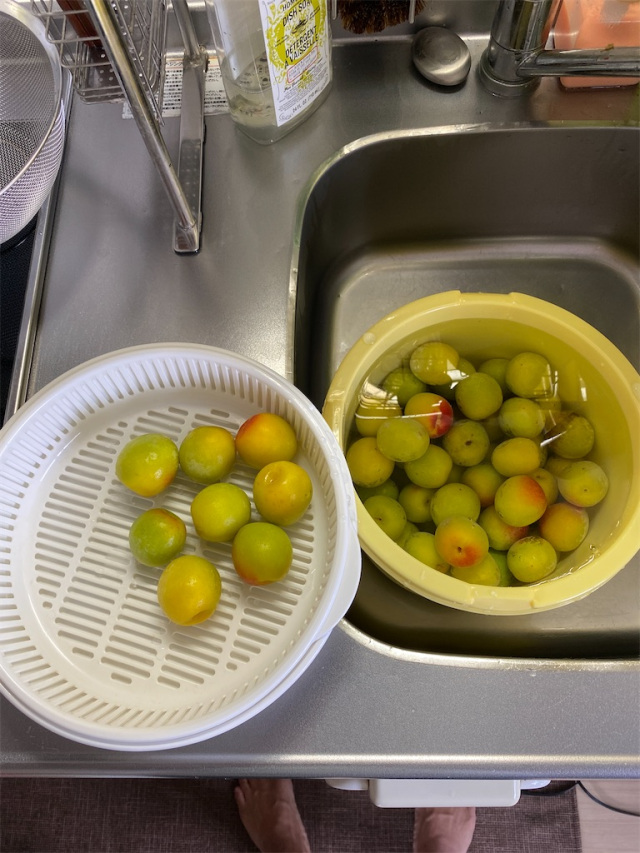
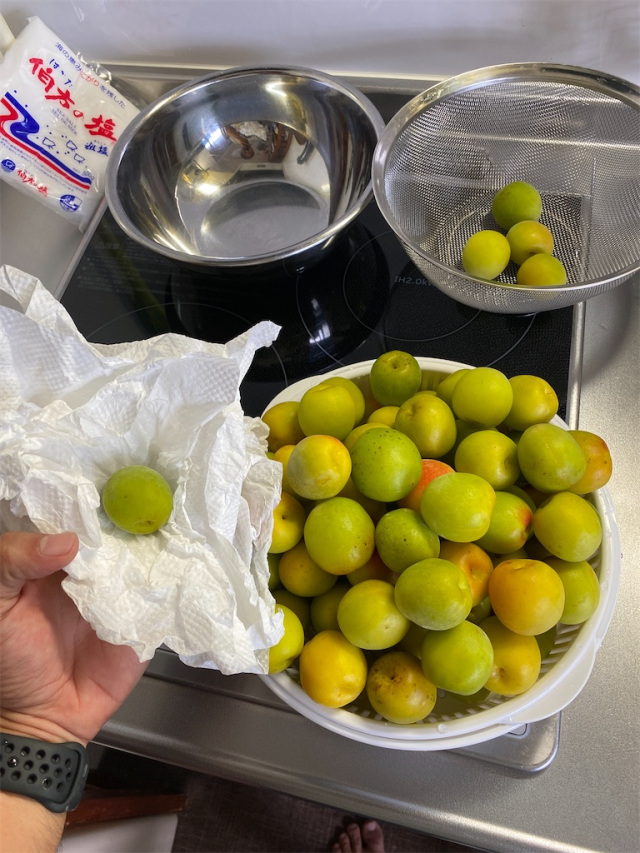
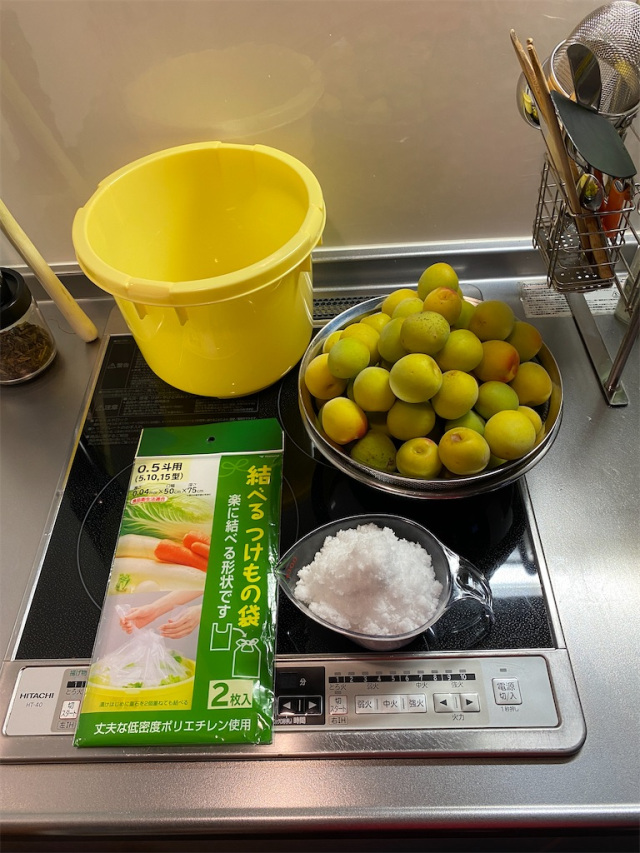
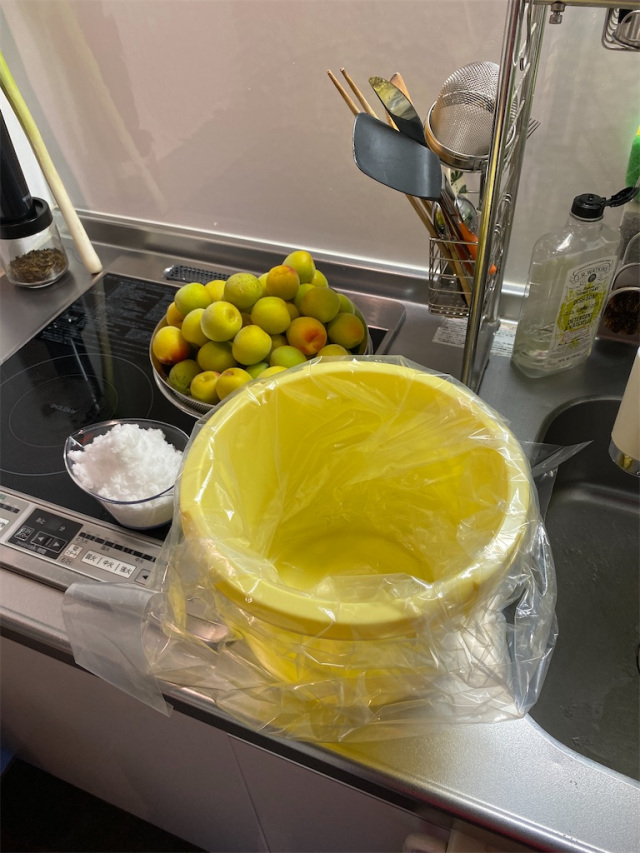
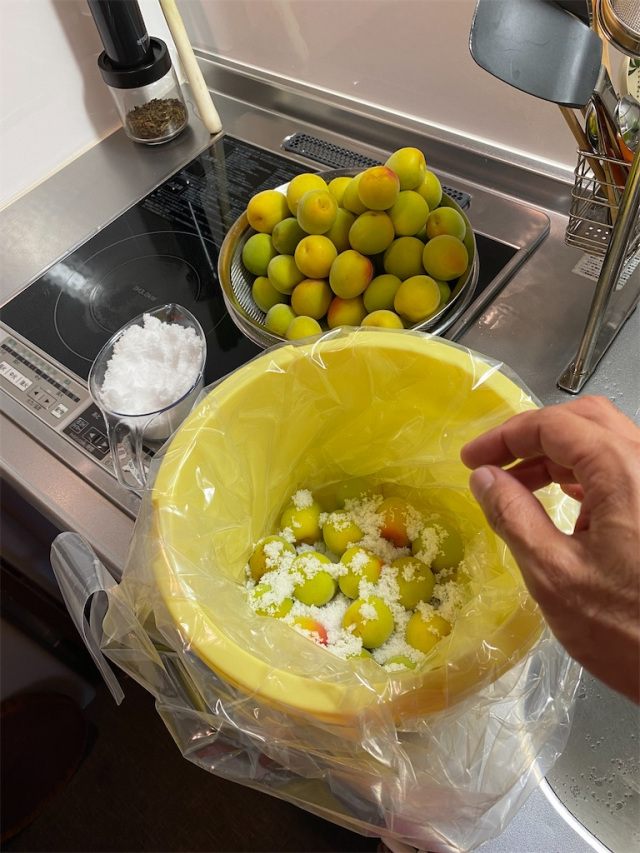
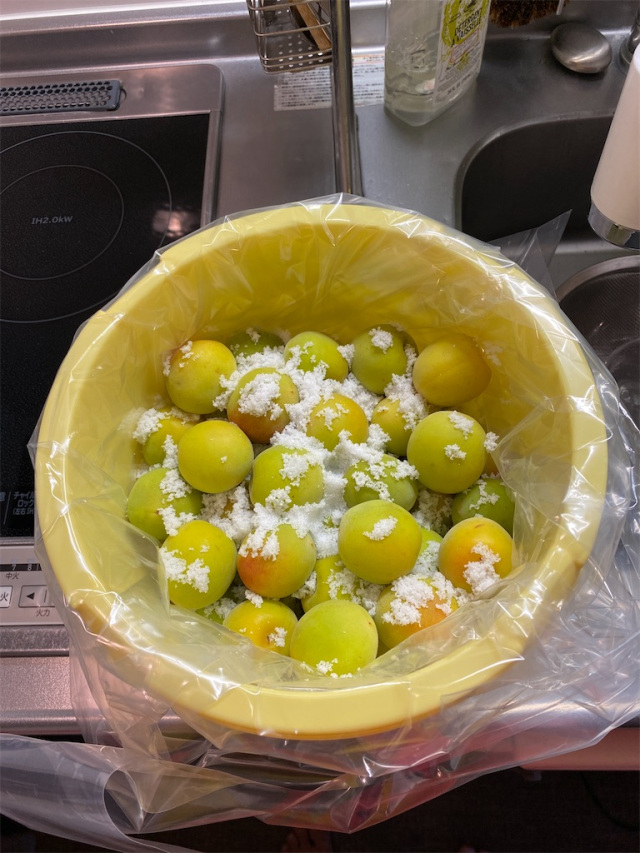
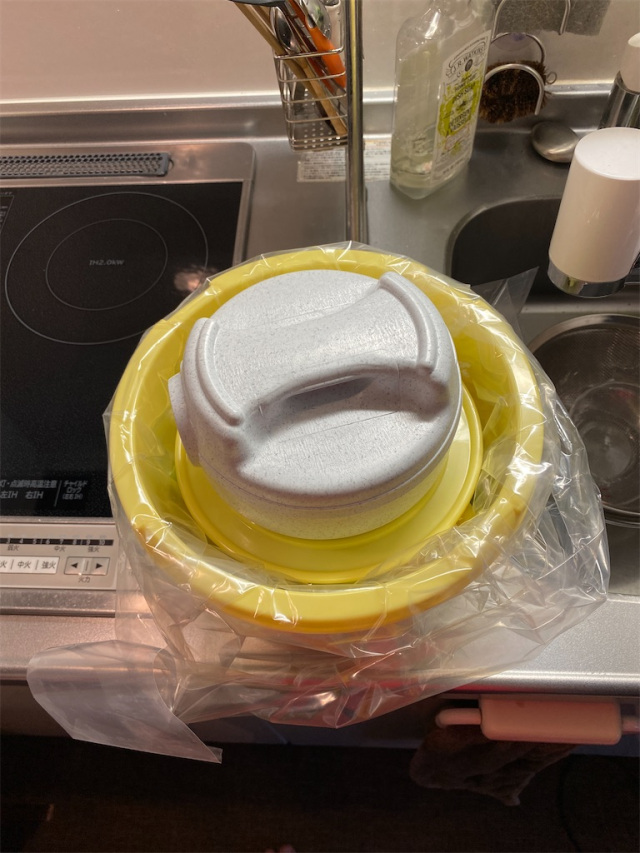
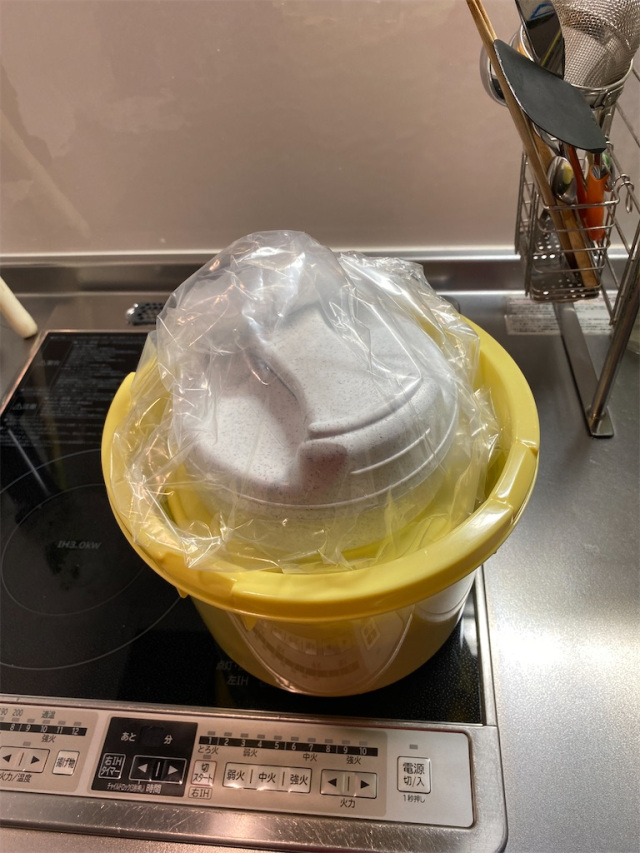
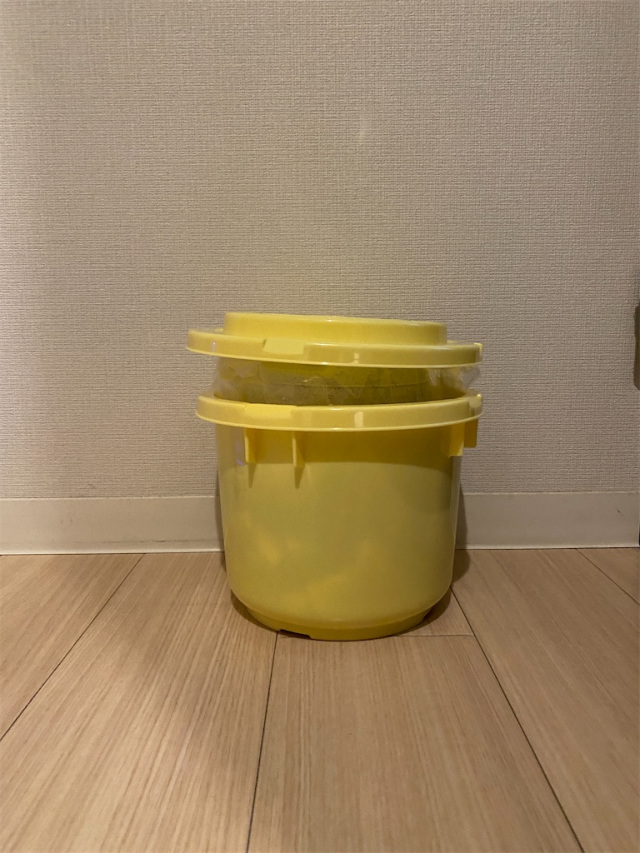
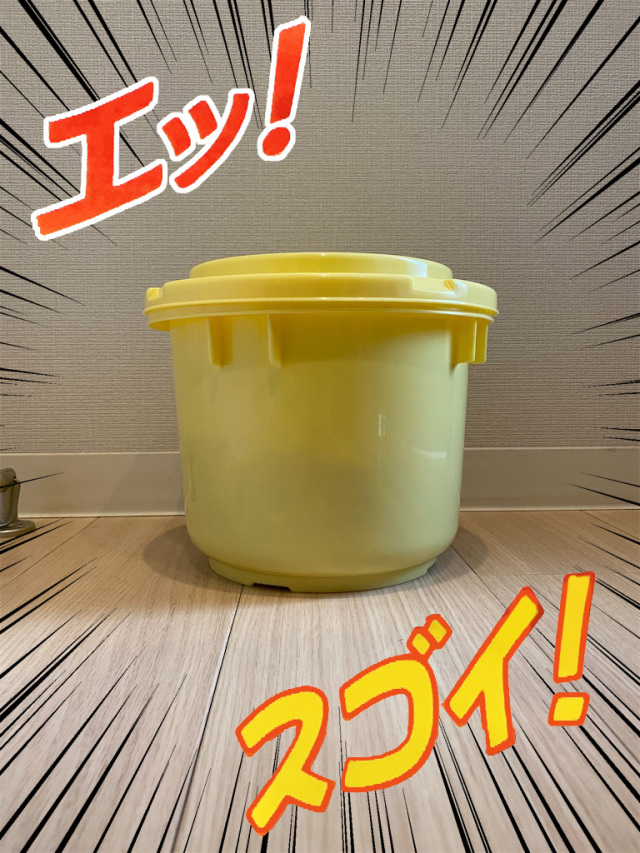
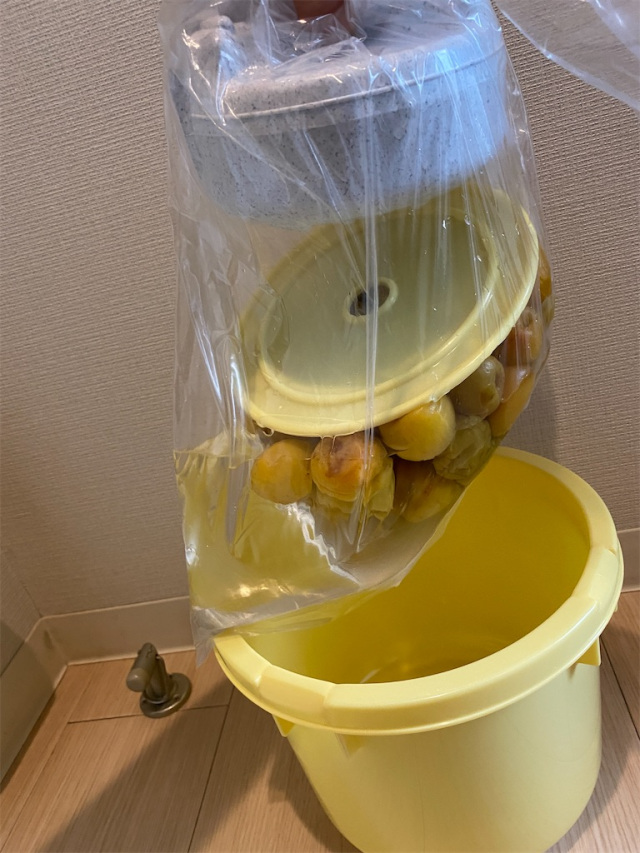
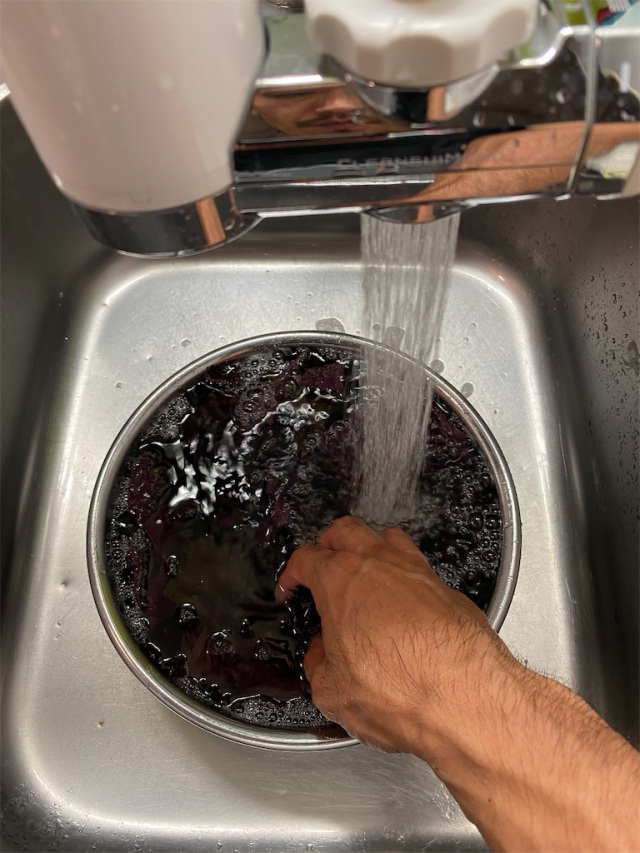
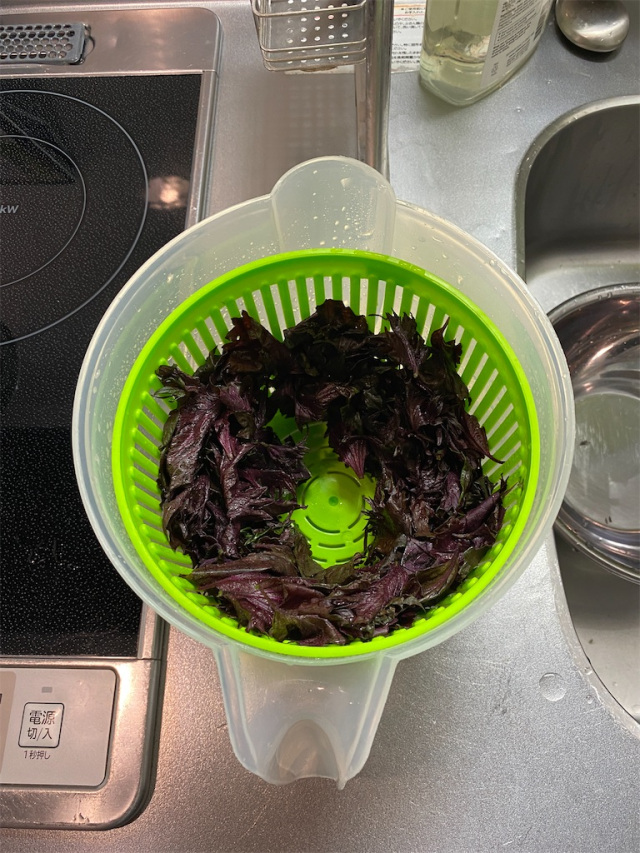
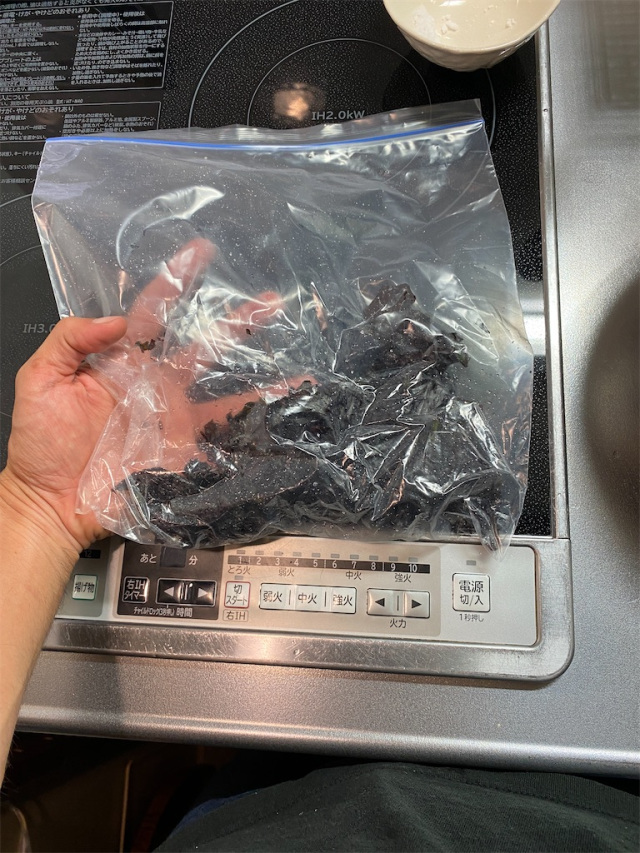
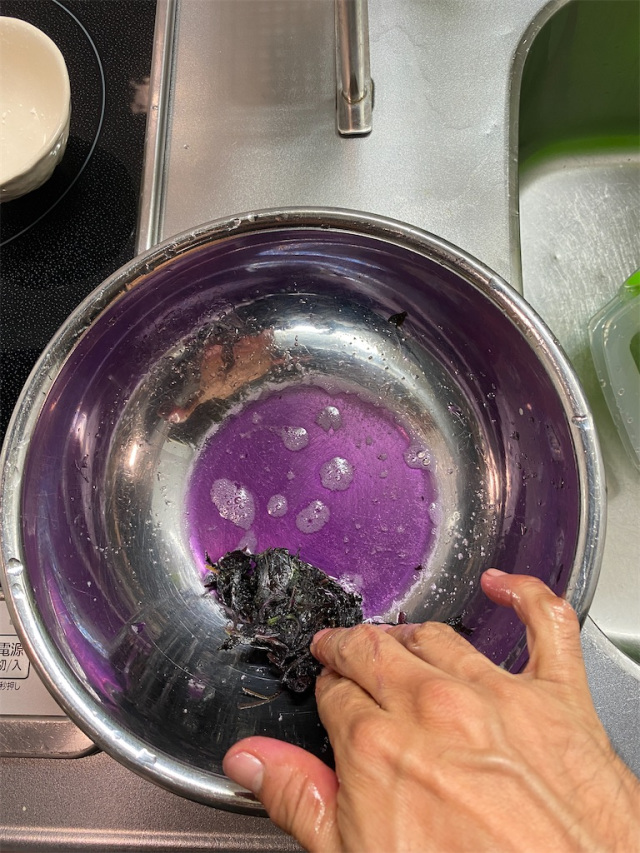
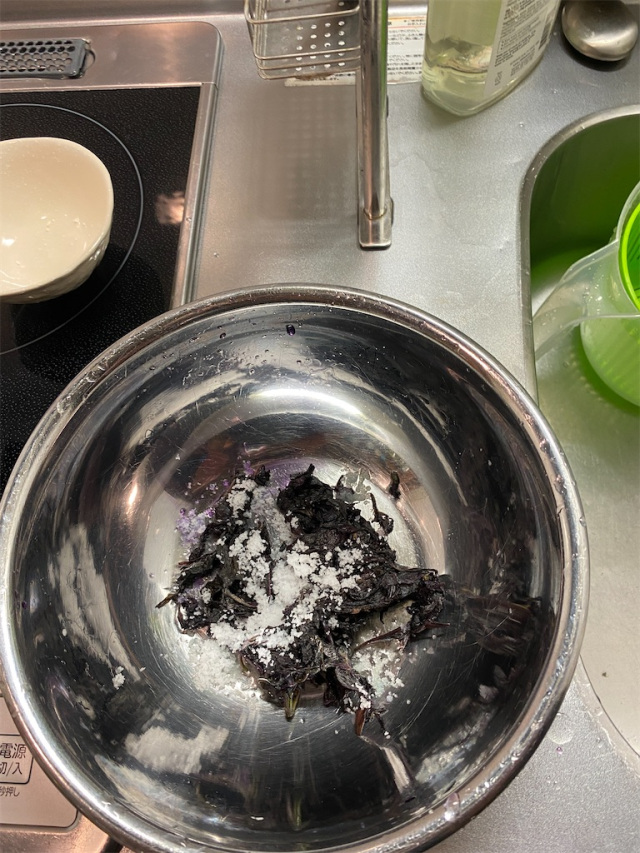
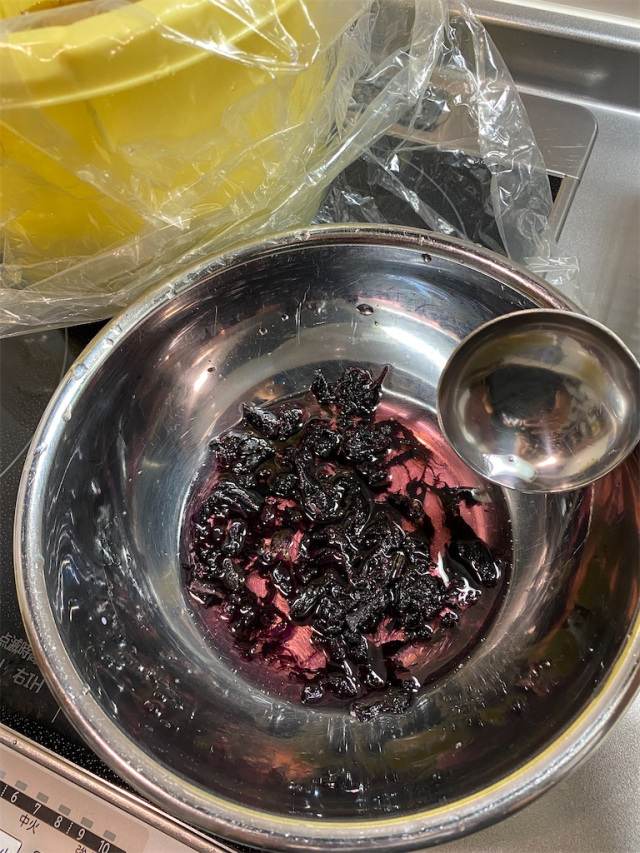
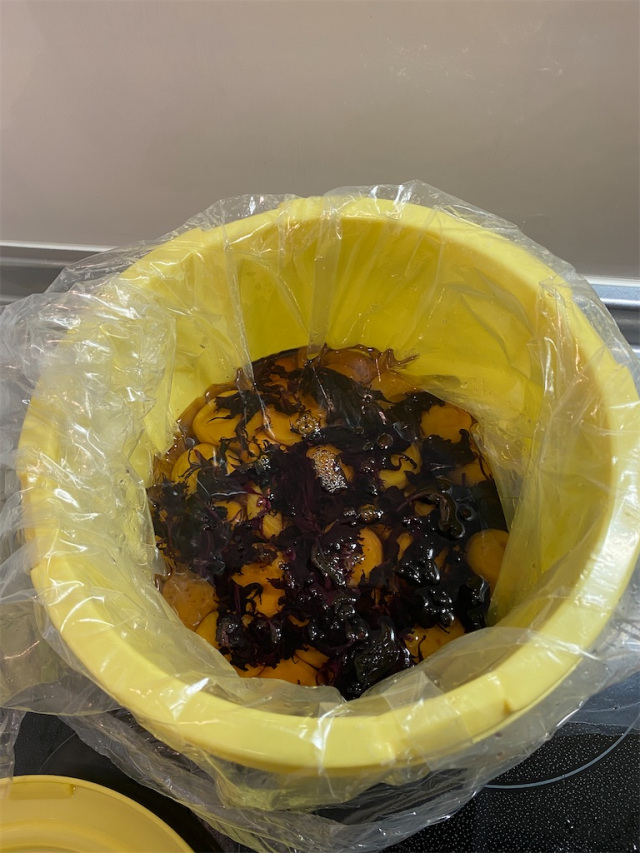
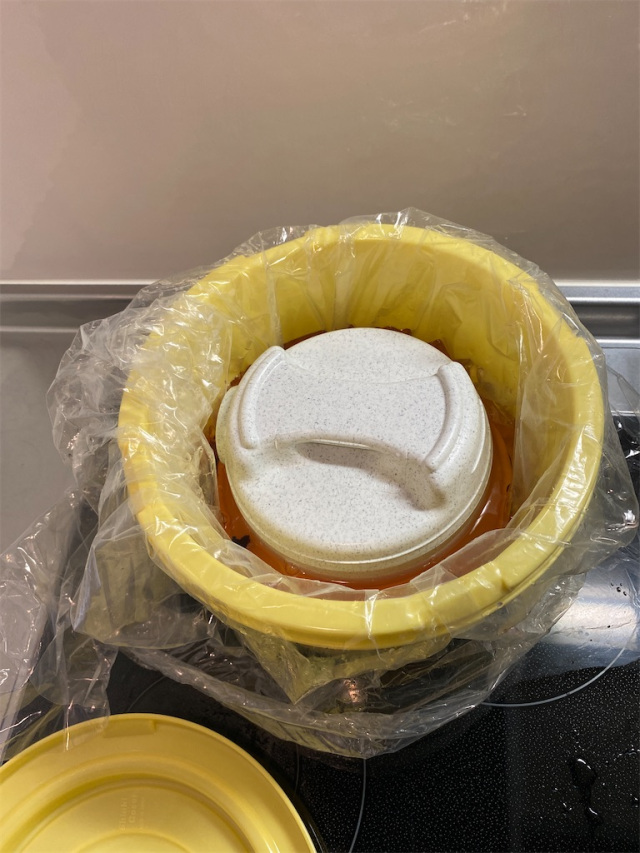
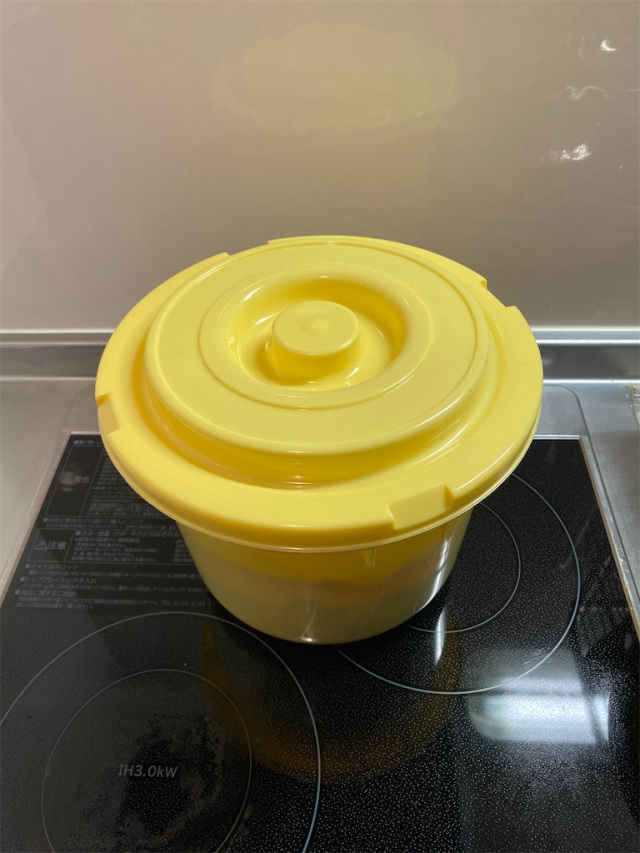
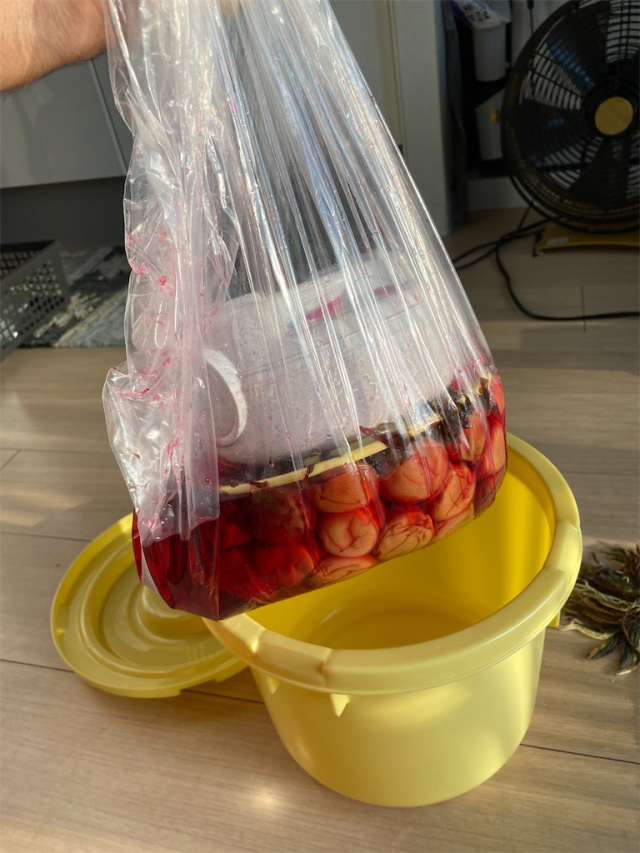
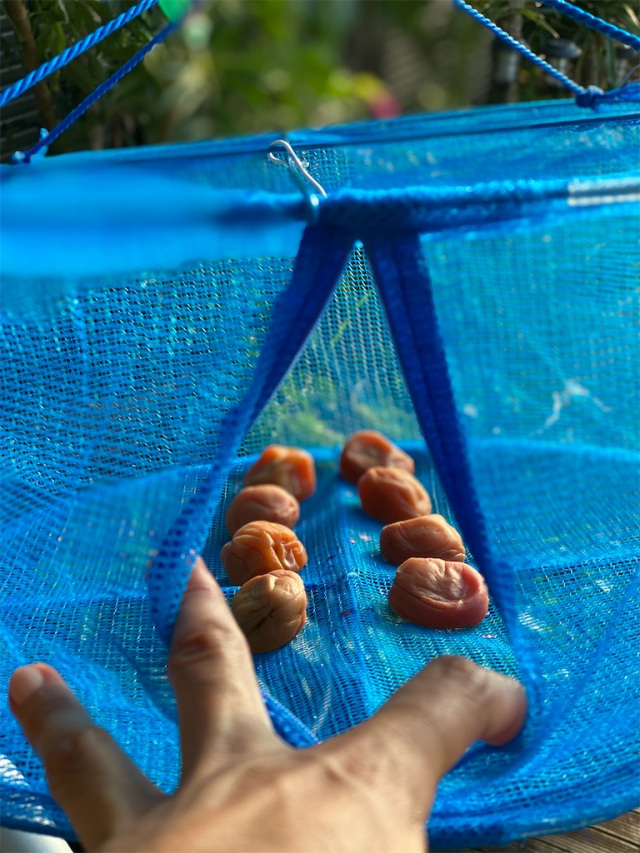
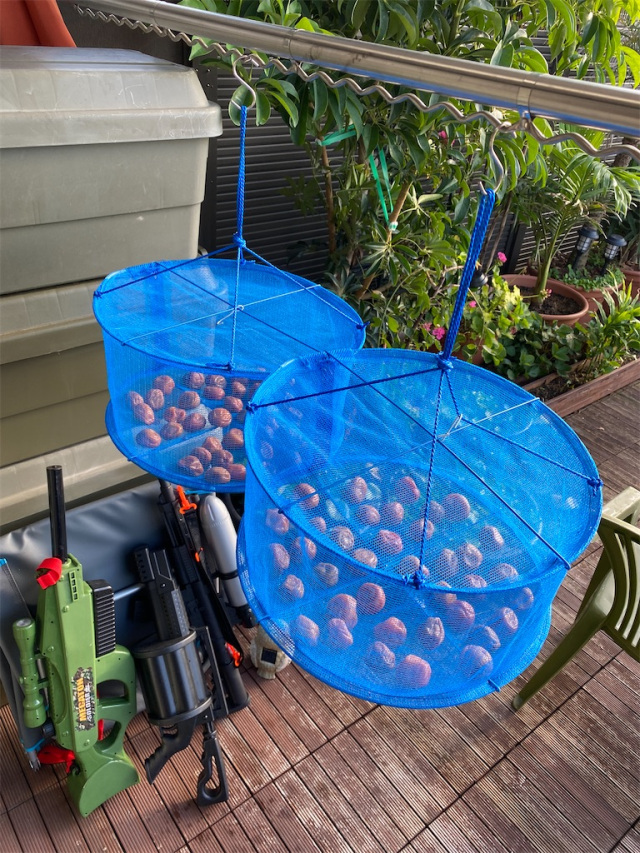
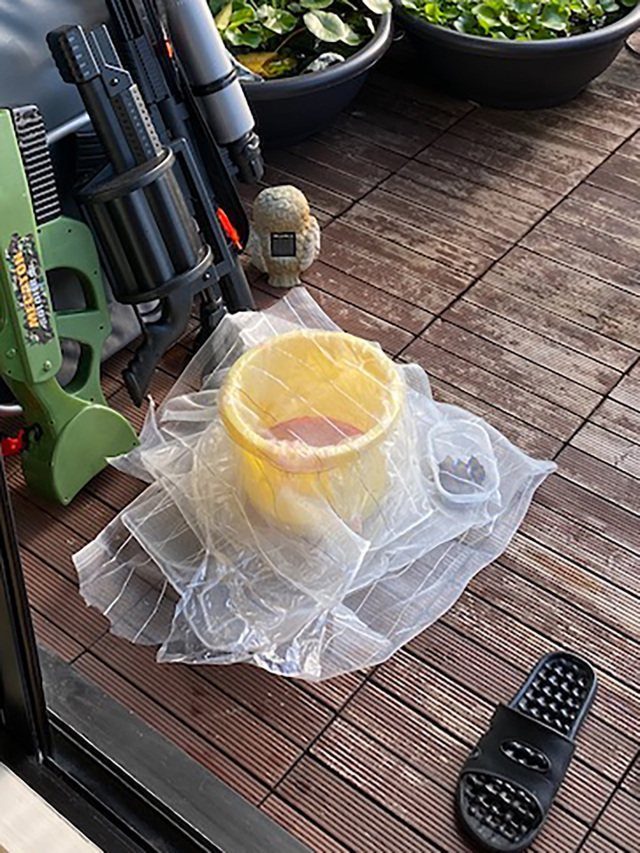
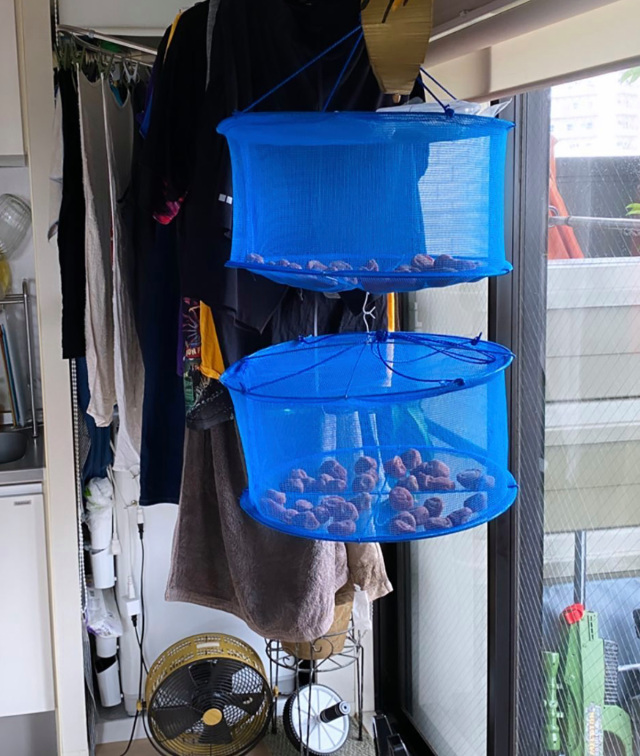
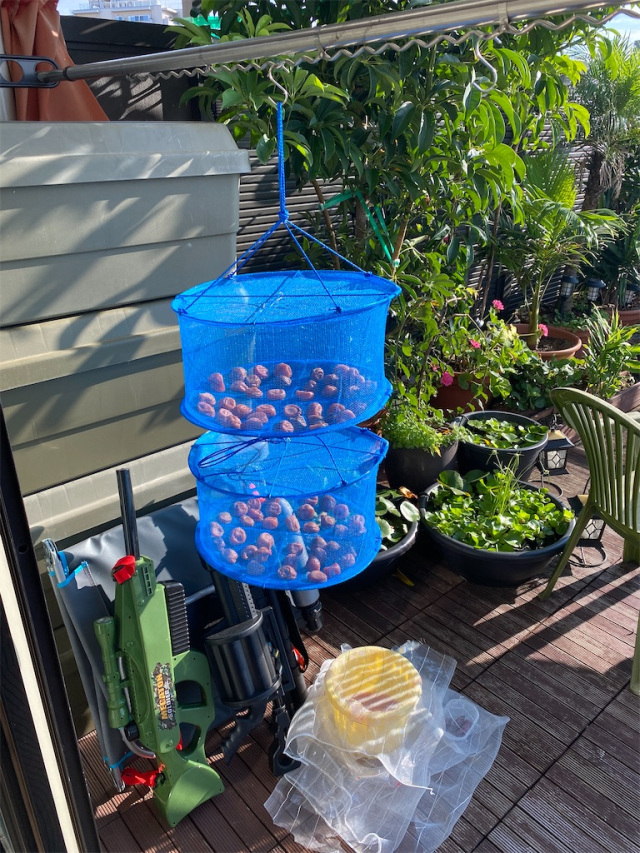
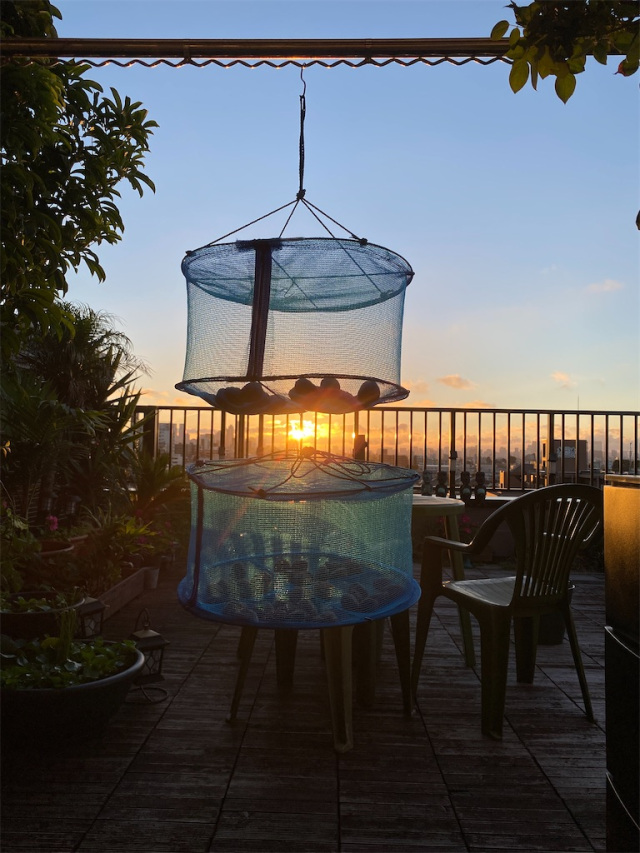
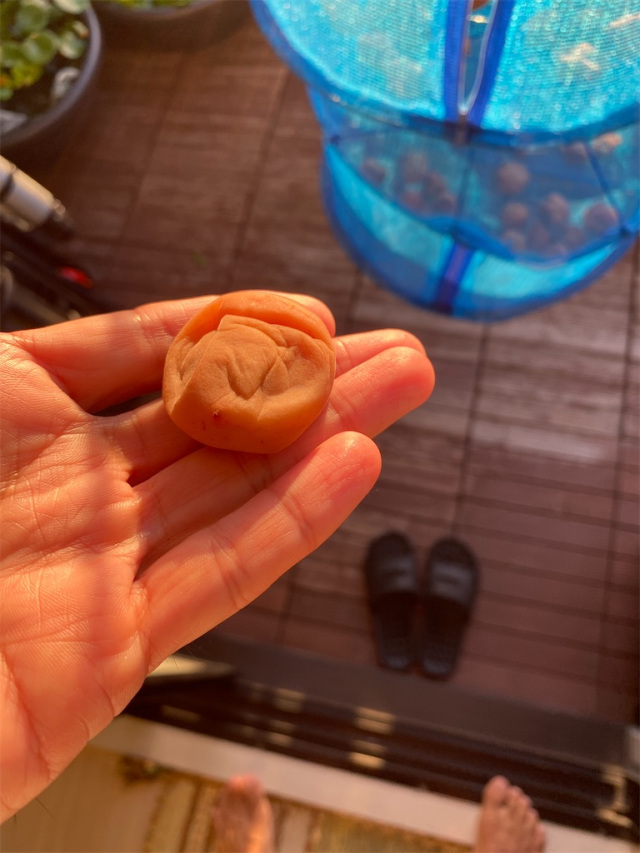
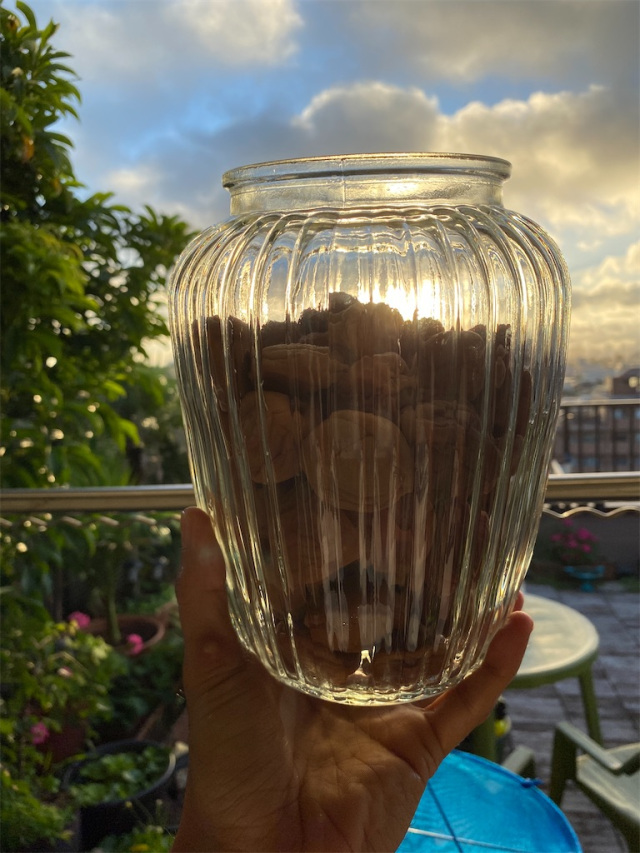
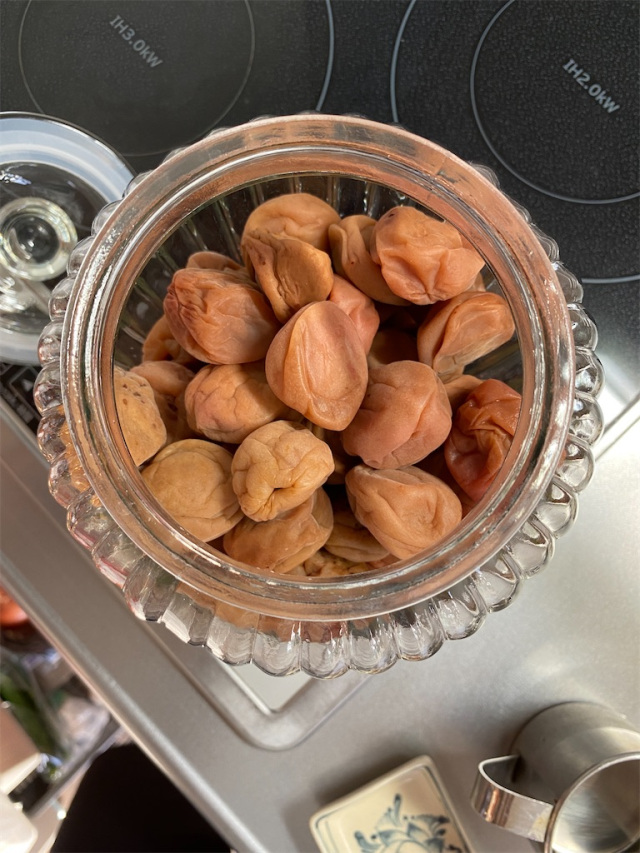
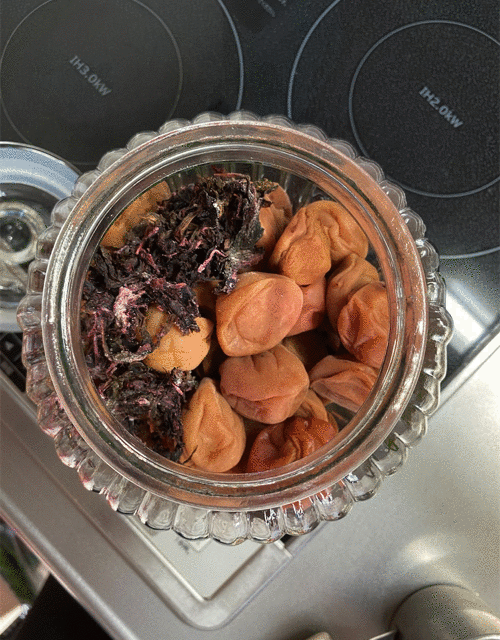
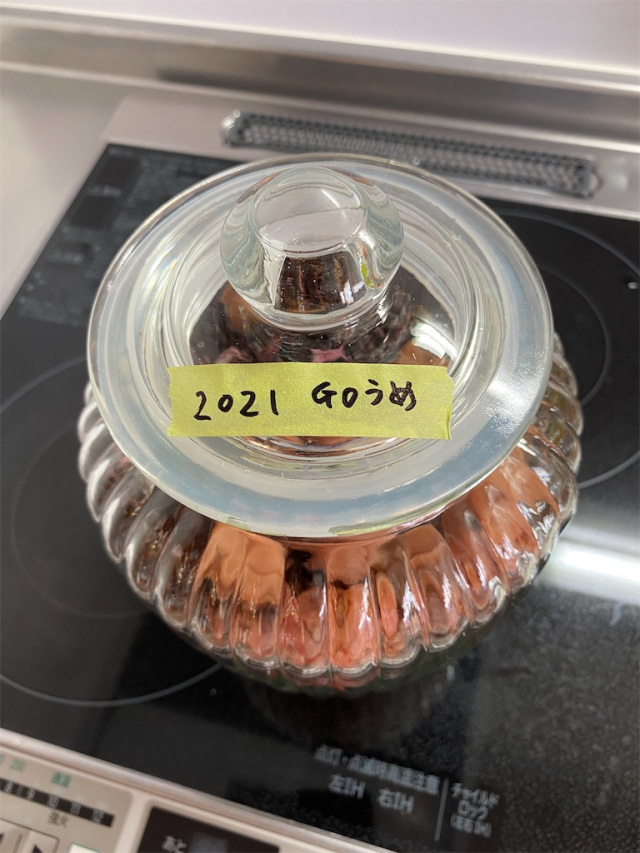
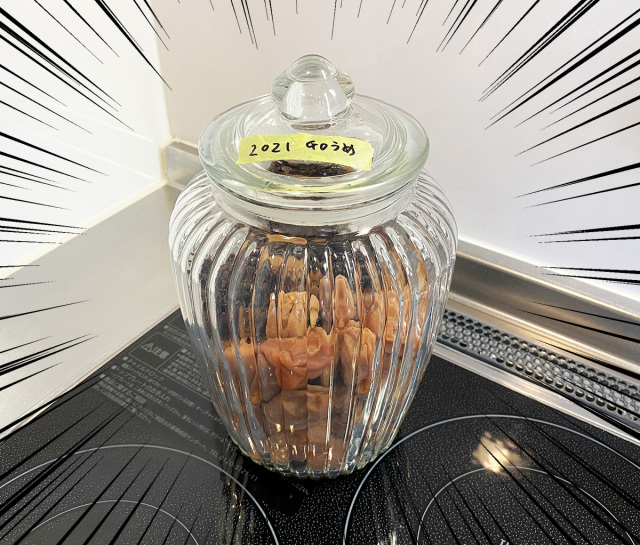
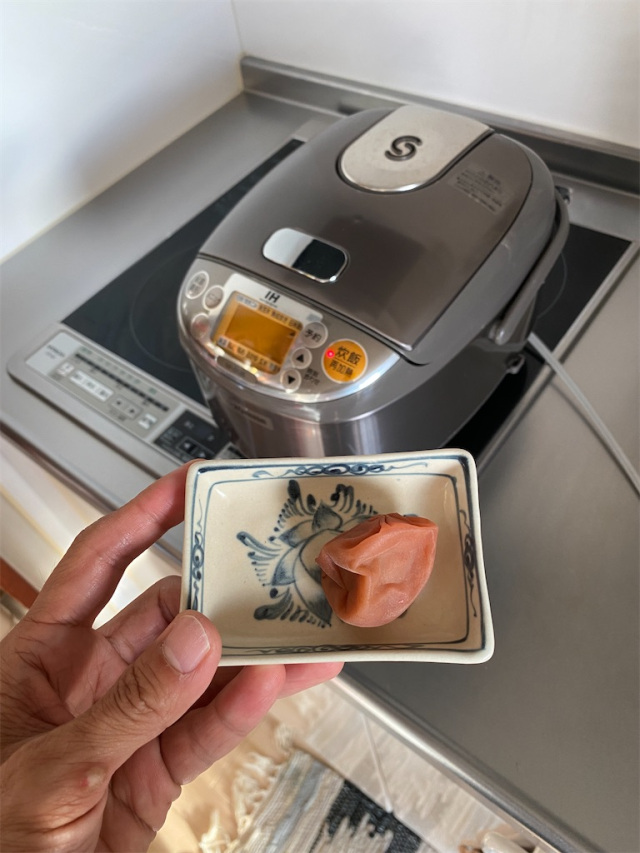
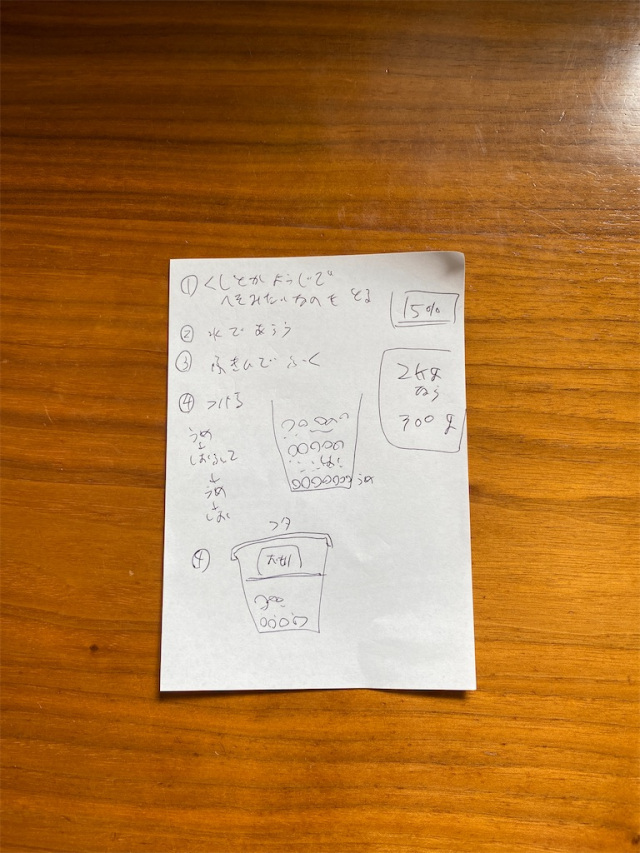
 Now’s your once-in-12-years chance to order this special $850 pot of pickled plums!
Now’s your once-in-12-years chance to order this special $850 pot of pickled plums! Pizza Hut Japan creates Japanese plum pizza, calls it a “Japanese Margherita”【Photos】
Pizza Hut Japan creates Japanese plum pizza, calls it a “Japanese Margherita”【Photos】 Pizza Hut Japan’s pickled plum pizza is mercilessly aware of what it is【Taste test】
Pizza Hut Japan’s pickled plum pizza is mercilessly aware of what it is【Taste test】 Plum crazy Wakayama’s local take on Tabasco sauce is made with Japanese plums
Plum crazy Wakayama’s local take on Tabasco sauce is made with Japanese plums Japanese bento serves up a slice of the samurai life in a special carry case
Japanese bento serves up a slice of the samurai life in a special carry case How to order snacks on a Shinkansen bullet train in Japan
How to order snacks on a Shinkansen bullet train in Japan Hello, cosmetics! Clinique teams up with Hello Kitty this summer for first-time collaboration
Hello, cosmetics! Clinique teams up with Hello Kitty this summer for first-time collaboration Burger King Japan suddenly adds Dr. Pepper and Dr. Pepper floats to its menu nationwide
Burger King Japan suddenly adds Dr. Pepper and Dr. Pepper floats to its menu nationwide Demon Slayer: Kimetsu no Yaiba gets new roller coaster attractions and food at Universal Studios Japan
Demon Slayer: Kimetsu no Yaiba gets new roller coaster attractions and food at Universal Studios Japan New samurai glasses are Japan’s latest weird must-have souvenir
New samurai glasses are Japan’s latest weird must-have souvenir New Nintendo Lego kit is a beautiful piece of moving pixel art of Mario and Yoshi【Photos】
New Nintendo Lego kit is a beautiful piece of moving pixel art of Mario and Yoshi【Photos】 Nintendo history you can feel – Super NES, N64, and GameCube controllers become capsule toys
Nintendo history you can feel – Super NES, N64, and GameCube controllers become capsule toys Japan’s new difficult-to-drink-from beer glass protects your liver, but it’s a brutal experience
Japan’s new difficult-to-drink-from beer glass protects your liver, but it’s a brutal experience 10 things you should buy at 7-Eleven in Japan
10 things you should buy at 7-Eleven in Japan McDonald’s adds new watermelon frappe and fruity macaron to its menu in Japan
McDonald’s adds new watermelon frappe and fruity macaron to its menu in Japan “The most Delicious Cup Noodle in history” – Japan’s French Cup Noodle wins our heart【Taste test】
“The most Delicious Cup Noodle in history” – Japan’s French Cup Noodle wins our heart【Taste test】 Starbucks releases a cute Frappuccino and Unicorn Cake…but not in Japan
Starbucks releases a cute Frappuccino and Unicorn Cake…but not in Japan Kyoto Tower mascot termination reveals dark side behind cute Japanese characters
Kyoto Tower mascot termination reveals dark side behind cute Japanese characters McDonald’s Japan’s Soft Twist Tower: A phantom ice cream only sold at select branches
McDonald’s Japan’s Soft Twist Tower: A phantom ice cream only sold at select branches Yabai Ramen: What makes this Japanese ramen so dangerous?
Yabai Ramen: What makes this Japanese ramen so dangerous? Finally! Nintendo Japan expands Switch 8-bit controller sales to everybody, Online member or not
Finally! Nintendo Japan expands Switch 8-bit controller sales to everybody, Online member or not Japanese government wants to build luxury resorts in all national parks for foreign tourists
Japanese government wants to build luxury resorts in all national parks for foreign tourists To combat declining birth rate, Japan to begin offering “Breeding Visas” to foreigners
To combat declining birth rate, Japan to begin offering “Breeding Visas” to foreigners Studio Ghibli releases anime heroine cosplay dresses that are super comfy to wear
Studio Ghibli releases anime heroine cosplay dresses that are super comfy to wear Woman charged for driving suitcase without a license in Osaka
Woman charged for driving suitcase without a license in Osaka Studio Ghibli unveils My Neighbour Totoro miniature house model
Studio Ghibli unveils My Neighbour Totoro miniature house model Kyoto experiencing problems with foreign tourists not paying for bus fares, but not on purpose
Kyoto experiencing problems with foreign tourists not paying for bus fares, but not on purpose Fighting mild hunger with a Japanese soda that turns into jelly in the stomach【Taste test】
Fighting mild hunger with a Japanese soda that turns into jelly in the stomach【Taste test】 Studio Ghibli’s Howl’s Moving Castle tapestry unveiled in Japan for first time
Studio Ghibli’s Howl’s Moving Castle tapestry unveiled in Japan for first time McDonald’s new Happy Meals offer up cute and practical Sanrio lifestyle goods
McDonald’s new Happy Meals offer up cute and practical Sanrio lifestyle goods Sales of Japan’s most convenient train ticket/shopping payment cards suspended indefinitely
Sales of Japan’s most convenient train ticket/shopping payment cards suspended indefinitely Sold-out Studio Ghibli desktop humidifiers are back so Totoro can help you through the dry season
Sold-out Studio Ghibli desktop humidifiers are back so Totoro can help you through the dry season Japanese government to make first change to romanization spelling rules since the 1950s
Japanese government to make first change to romanization spelling rules since the 1950s Foreigner’s request for help in Tokyo makes us sad for the state of society
Foreigner’s request for help in Tokyo makes us sad for the state of society Ghibli founders Toshio Suzuki and Hayao Miyazaki contribute to Japanese whisky Totoro label design
Ghibli founders Toshio Suzuki and Hayao Miyazaki contribute to Japanese whisky Totoro label design Doraemon found buried at sea as scene from 1993 anime becomes real life【Photos】
Doraemon found buried at sea as scene from 1993 anime becomes real life【Photos】 Tokyo’s most famous Starbucks is closed
Tokyo’s most famous Starbucks is closed Princesses, fruits, and blacksmiths: Study reveals the 30 most unusual family names in Japan
Princesses, fruits, and blacksmiths: Study reveals the 30 most unusual family names in Japan Which Japanese convenience store sells the best onigiri rice balls?【Taste test】
Which Japanese convenience store sells the best onigiri rice balls?【Taste test】 Tokyo store serves stunning kakigori ice dessert that looks and tastes like an onigiri rice ball
Tokyo store serves stunning kakigori ice dessert that looks and tastes like an onigiri rice ball New Ume Sake Japanese Kit Kat features the flavour of traditional plum wine…with a twist
New Ume Sake Japanese Kit Kat features the flavour of traditional plum wine…with a twist Japan unveils chewing gum-flavoured chips!
Japan unveils chewing gum-flavoured chips! Meet the Mega Bento, a Japanese meal that’s heavier than a newborn baby
Meet the Mega Bento, a Japanese meal that’s heavier than a newborn baby Do you know what this caterpillar-like food is? We had no idea!【Taste test】
Do you know what this caterpillar-like food is? We had no idea!【Taste test】 Turning a crazy cheap country Japanese house into a home — Step 9: Chestnuts【SoraHouse】
Turning a crazy cheap country Japanese house into a home — Step 9: Chestnuts【SoraHouse】 Kyoto curry bread comes with a very special filling
Kyoto curry bread comes with a very special filling Japan super budget dining – What’s the best way to spend 1,000 yen at Family Mart?
Japan super budget dining – What’s the best way to spend 1,000 yen at Family Mart? Kyary Pamyu Pamyu bento sold for 10th anniversary tour
Kyary Pamyu Pamyu bento sold for 10th anniversary tour Attack on sobriety: Round 2! This time, plum wine/juice with limited edition character labels
Attack on sobriety: Round 2! This time, plum wine/juice with limited edition character labels Do gohan no otomo, Japan’s traditional easy white rice toppings, work with toast?【SoraKitchen】
Do gohan no otomo, Japan’s traditional easy white rice toppings, work with toast?【SoraKitchen】 Sad news: 1,266 famous Tokyo plum trees get the axe to prevent spread of “plum pox”
Sad news: 1,266 famous Tokyo plum trees get the axe to prevent spread of “plum pox” Hoisu: The phantom Japanese sake that can’t be purchased in stores
Hoisu: The phantom Japanese sake that can’t be purchased in stores Celebrate New Years in Pokémon style — with a monster ball filled with traditional osechi food!
Celebrate New Years in Pokémon style — with a monster ball filled with traditional osechi food! Put a unique twist on your oatmeal by turning it into some Japanese comfort food
Put a unique twist on your oatmeal by turning it into some Japanese comfort food
Leave a Reply